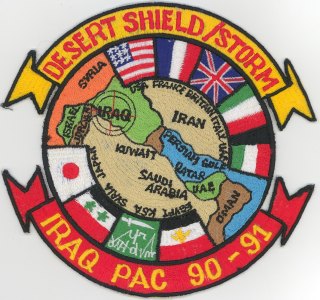
Our P-3s played a lead role in monitoring seaborne commerce entering
the Middle East during Operation Desert Shield. This is one of
the more colorful jacket patches that was typical of those produced
by various units.
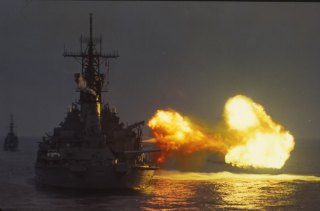
Stern view of the Missouri firing at Iraqi targets in Kuwait during
Operation Desert Storm
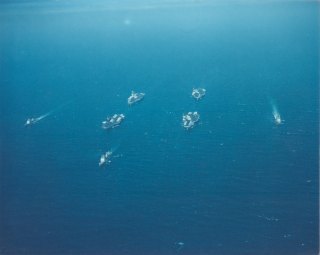
By mid-February 1991 we had four carriers serving together in the Persian
Gulf, with two more operating from the Red Sea. This shows the
Midway, Ranger, America and Roosevelt steaming in a “photo formation”
for sake of this picture. In actual operations the carriers would
be many miles apart.
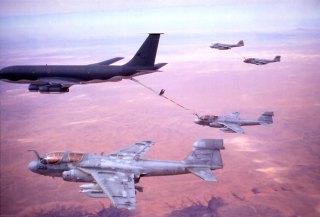
Navy EA-6B electronics countermeasures aircraft refueling from an Air
Force KC-135 tanker overt Saudi Arabia. Another EA-6B is taking on fuel
from a Navy KA-6 tanker in the background.
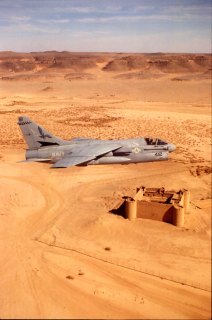
Navy A-7E Corsair II passing an old Ottoman castle built by the Turks
in the mid-Eighteenth Century, when they sought to maintain control
over the Wahhabi Islamic sect.
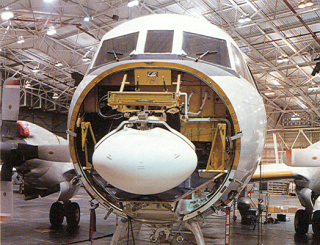
Texas Instruments’ APS-137 Inverse Synthetic Aperture Radar (ISAR)
antenna replaced APS-115 surface search on selected Update III aircraft
beginning in 1989. It is a Doppler radar system that focuses on
detecting anything on the ocean that is in motion, such as a swaying
vessel.
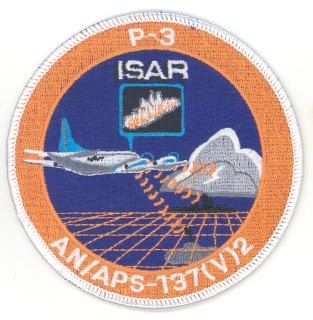
During Desert Storm the P-3C Update IIIs with AN/APS-137 Inverse Synthetic
Aperture Radar (ISAR) were dispatched as over-the-horizon (OTHT) patrol
and targeting platforms with the code name Outlaw Hunter. On one occasion
they detected a gaggle of Iraqi patrol boats dashing between Umm Qsar
and Basra. They directed A-6 and F/A-18 strike aircraft to interdict
the craft near Bubiyan Island. Of the 108 Iraqi vessels destroyed during
Desert Storm, 55 were attributed to Outlaw Hunter targeting.
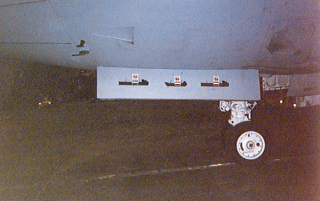
Kill markings on a P-3C Outlaw Hunter aircraft, which directed strike
aircraft for maritime targets. Outlaw Hunter proved itself as
a valuable OTHT platform, capable of staying aloft longer than anything
other aircraft in the conflict. Our only limitations were allowable
crew flight hours per month. Aircrews from VP-MAU and VP-91 helped shoulder
the load, the only Naval Reserve aviators to fly combat missions in
the Gulf War. I was responsible for briefing these crews.
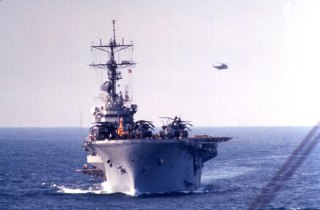
The helicopter carrier USS Tripoli (LPH-10) was operating in the Persian
Gulf during Operation Desert Shield and Desert Storm, where she served
as flagship of the minesweeping activities in the northern Gulf.
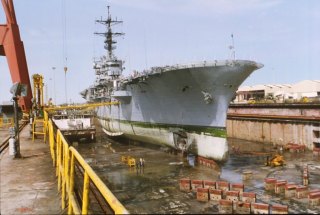
On February 18, 1991 the Tripoli struck a mine near her starboard
bow, injuring several sailors. The ship’s company undertook
damage control and within 20 hours, the Tripoli resumed normal operations
and remained on station another four days before suitable relief could
be engaged. We were all impressed!
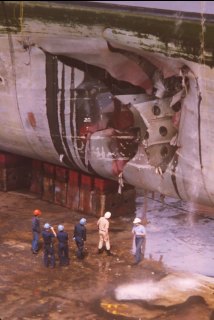
The Tripoli was taken into dry dock at the Arabian Ship Repair Yard
in Bahrain. After draining, a 20 x 30 feet hole was revealed!
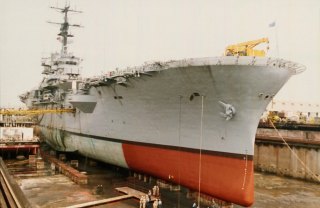
A month and $5 million later, the Triploi was repaired and able to return
to her assigned tasks. It was the first time since the Civil War
that a warship remained on station and actively functioning after a
mine detonation. She was subsequently decommissioned in Sept.
1995.
Questions
or comments on this page?
E-mail Dr. J David Rogers at rogersda@mst.edu.

|